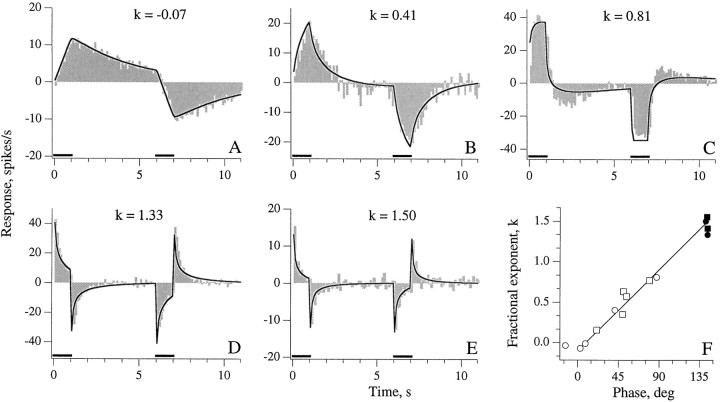Fig. 7.
Rotation trapezoids with 1 sec leading and trailing ramps (bars, horizontal axes) were used to study response dynamics of PC (A, B, C) and PN (D, E) units. Shaded histograms, Actual responses; curved lines, best-fitting trapezoid responses obtained by inverting text equation 1. The three PC units are arranged to show sensitivities ranging from near velocity to near acceleration. A, Velocity-sensitive PC unit has a response most closely resembling the velocity trapezoid.B, PC unit encoding midway between velocity and acceleration. C, Near acceleration-sensitive PC unit the response of which parallels differentiated version of velocity trapezoid. D, E, Two PN units encode between acceleration and jerk. F, Comparison of fractional exponent (k) values giving best-fitting trapezoid responses and the 0.3 Hz sinusoidal phases for 13 units. Solid symbols, PN; open symbols, PC. Circles, 1 sec ramps;squares, 2 sec ramps. For one PN unit, trapezoids with 1 sec and 2 sec ramps were both tested. Straight line, Expected relation between k (ordinate) and sinusoidal phase (abscissa) derived from text Equation 1.

